Today Current Affairs: 30th August 2021 for UPSC IAS exams, State PSC exams, SSC CGL, State SSC, RRB, Railways, Banking Exam & IBPS, etc
Table of Contents
Bharat Series (BH-series):
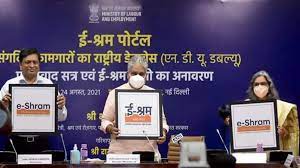
In order to facilitate seamless transfer of vehicles, the Ministry of Road Transport & Highways vide notification dated 26 Aug 2021, has introduced a new registration mark for new vehicles i.e. “Bharat series (BH-series)”.
- A vehicle bearing this registration mark shall not require assignment of a new registration mark when the owner of the vehicle shifts from one State to another.
Format of Bharat series (BH-series) Registration Mark –
- YY BH #### XX
- YY – Year of first registration
- BH- Code for Bharat Series
- ####- 0000 to 9999 (randomized)
- XX- Alphabets (AA to ZZ)
This vehicle registration facility under “Bharat series (BH-series)” will be available on voluntary basis to Defense personnel, employees of Central Government/ State Government/ Central/ State Public Sector Undertakings and private sector companies/organizations, which have their offices in four or more States/Union territories.
- The motor vehicle tax will be levied for two years or in multiple of two.
- This scheme will facilitate free movement of personal vehicles across States/UTs of India upon relocation to a new State/UT.
- After completion of the fourteenth year, the motor vehicle tax shall be levied annually which shall be half of the amount which was charged earlier for that vehicle.
Environment And Agricultural Ministerial Meeting: BRICS:

The BRICS (Brazil, Russia, India, China and South Africa) Environment and Agriculture Ministers’ Meeting was held.
- BRICS brings together the major emerging economies of the world, hosting 41% of the world population, contributing 24% of the world Gross Domestic Product (GDP) and over 16% share in world trade.
- India is the chair of the BRICS grouping for 2021.
7th BRICS Environment Ministerial 2021:
- Air pollution, circular economy, combating marine plastic litter and single use plastic product pollution, forestry, including the prevention and mitigation of forest fires, and conservation of biodiversity.
- Agreed to focus on cooperation on waste management.
- As the efficient management of wastes including recovery of energy and secondary raw materials is crucial for resource conservation, healthy ecosystem and quality of life of the people.
- New Delhi Statement on Environment was Adopted:
- It is aimed at furthering the spirit of Cooperation for Continuity, Consolidation and Consensus in Environment among the BRICS Nations, especially ahead of the COP15 Biodiversity meet and COP26 (Climate Change) later this year.
- BRICS Resource Efficiency and Circular Economy Dialogue:
- India has launched this initiative to facilitate an exchange of knowledge and best practices on waste management, resource efficiency and circular economy.
- The countries will also engage in dialogues on construction, agriculture, solar, biofuels, packaging, electronic wastes, food, water and textiles.
- India’s Stand:
- Acknowledged that the Climate Change 2021 Report: IPCC may be the last signal for taking concrete collective global actions against global environmental and climate challenges.
- Actions should be guided by equity, national priorities and circumstances, and the principles of “Common but Differentiated Responsibilities and Respective Capabilities (CBDR-RC)”.
- CBDR–RC is a principle within the United Nations Framework Convention on Climate Change (UNFCCC) that acknowledges the different capabilities and differing responsibilities of individual countries in addressing climate change.
11th Meeting of Agriculture Ministers of BRICS:
- Theme:
- BRICS Partnership for Strengthening Agro Biodiversity for Food and Nutrition Security.
- BRICS Agricultural Research Platform:
- It has been set up in India for strengthening the cooperation in the field of agricultural research & innovations amongst the BRICS member States.
- It has been developed by India.
- The platform as a global platform for science-led agriculture will help in addressing the issues of world hunger, undernutrition, poverty and inequality by promoting sustainable agricultural development through strategic cooperation in agriculture and allied sectors.
- Action Plan of 2021-24 for Agricultural Cooperation Adopted:
- Focuses on the themes of food security, welfare of farmers, conservation of agrobiodiversity, resilience of food and agricultural production systems, promotion of digital agricultural solutions etc.
- India’s Stand:
- Highlighted its efforts in preserving the agro-biodiversity by :
- Establishing and maintaining the National Gene banks for plants, animals, fish, insects and agriculturally important microorganisms at different respective Bureaus.
- Actively promoting the diversification of its agri-food systems through countrywide programs such as pulses, oilseeds, horticultural crops, National Bamboo Mission and the recently launched National Palm Oil Mission.
- The objective of these programs is to increase the income of the farmers along with providing diversification in both farm and plate.
G20 Ministerial Conference On Women’s Empowerment
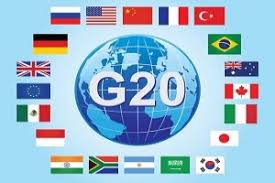
The Union Minister of Women & Child Development, Smt. Smriti Irani addressed the First ever G20 Ministerial Conference on Women’s Empowerment which was held at Santa Margherita Ligure, Italy in a hybrid format.
- G20 Conference on Women Empowerment acknowledged the common objectives and shared responsibilities to advance the goals of equality and development of women and girls in all spheres including STEM, Financial and Digital Literacy, Environment and Sustainability.
- The members of the G20 are: Argentina, Australia, Brazil, Canada, China, France, Germany, India, Indonesia, Italy, Japan, Republic of Korea, Mexico, Russia, Saudi Arabia, South Africa, Turkey, the United Kingdom, the United States, and the European Union.
Sovereign Gold Bond Scheme:

The Reserve Bank of India (RBI) has announced the Sovereign Gold Bond Scheme 2021-22 Series VI, which will be open for subscription for the period August 30-September 3, 2021.
About the Sovereign Gold Bond Scheme:
- The sovereign gold bond was introduced by the Government in 2015.
- Government introduced these bonds to help reduce India’s over dependence on gold imports.
- The move was also aimed at changing the habits of Indians from saving in physical form of gold to a paper form with Sovereign backing.
- The bonds will be restricted for sale to resident Indian entities, including individuals, HUFs, trusts, universities and charitable institutions.
- The bonds will be denominated in multiples of gram(s) of gold with a basic unit of 1 gram. The tenor will be for a period of 8 years with exit option from the 5th year to be exercised on the interest payment dates.
- The minimum permissible investment limit will be 1 gram of gold, while the maximum limit will be 4 kg for individual, 4 kg for Hindu Undivided Family and 20 kg for trusts and similar entities per fiscal (April-March) notified by the government from time to time.
- In case of joint holding, the investment limit of 4 kg will be applied to the first applicant only.
- Bonds can be used as collateral for loans.
- The loan-to-value (LTV) ratio is to be set equal to ordinary gold loan mandated by the Reserve Bank from time to time.
Three Supermassive Black Holes Has Been Spotted:

A rare merging of three supermassive black holes has been spotted by a team of astrophysicists in India.
- All three merging black holes were part of galaxies in the Toucan constellation.
- The discovery was made using data from the Ultraviolet Imaging Telescope (UVIT) onboard the first Indian space observatory ASTROSAT, the European integral field optical telescope called MUSE mounted on the Very Large Telescope (VLT) in Chile and infrared images from the optical telescope (IRSF) in South Africa.
- Presence of third black hole solves the final parsec problem: If two galaxies collide, their black hole will also come closer by transferring the kinetic energy to the surrounding gas.
- The distance between the blackholes decreases with time until the separation is around a parsec (3.26 light-years).
- The two black holes are then unable to lose any further kinetic energy to get even closer and merge. This is known as the final parsec problem.
Eco-Sensitive Zone Of The Deepar Beel Wildlife Sanctuary:
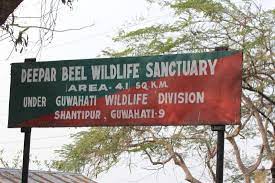
Ministry of Environment, Forest and Climate Change has notified the eco-sensitive zone of the Deepar Beel Wildlife Sanctuary on the south-western edge of Guwahati.
- The notification specified an area “to an extent varying from 294 metres to 16.32 km” as the eco-sensitive zone, with the total area being 148.9767 sq. km.
- The wetland has for decades been threatened by a railway track — set to be doubled and electrified — on its southern rim, a garbage dump, and encroachment from human habitation and commercial units.
- No new commercial hotels and resorts shall be permitted within 1 km of the boundary of the protected area or up to the extent of the eco-sensitive zone, whichever is nearer, except for small temporary structures for eco-tourism activities.
- Among activities prohibited in the eco-sensitive zone are hydroelectric projects, brick kilns, commercial use of firewood and discharge of untreated effluents in natural water bodies or land areas.
- Deepar Beel is one of the largest freshwater lakes in Assam and the State’s only Ramsar site besides being an Important Bird Area.
- It is a permanent freshwater lake, in a former channel of the Brahmaputra River, to the south of the main river.
- The wetland of Deepar Beel constitutes a unique habitat for aquatic flora and avian fauna.
- About 150 species of birds have been recorded in the sanctuary, out of which two are critically endangered, one endangered, five vulnerable and four near-threatened.
- Elephants regularly visit the wetland from adjoining Rani and Garhbhanda Reserve Forest and the wetland is an integral part of the elephant habitat.
- Besides these, 12 species of reptiles, 50 species of fish, six species of amphibians along with 155 species of aquatic macro-biota have been recorded in the sanctuary.
Eco-sensitive Zones (ESZs):
- Eco-Sensitive Zones (ESZs) or Ecologically Fragile Areas (EFAs) are areas notified by the MoEFCC around Protected Areas, National Parks and Wildlife Sanctuaries.
Animal Discoveries 2020:
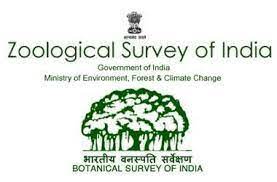
It is a document published recently by the Zoological Survey of India (ZSI).
- It reveals that 557 new species have been added to India’s fauna in 2020, which includes 407 new species and 150 new records.
- The number of faunal species in India has climbed to 1,02,718 species.
Important Species added:
- Trimeresurus salazar, a new species of green pit viper discovered from Arunachal Pradesh;
- Lycodon deccanensis, the Deccan wolf snake discovered from Karnataka;
- Sphaerotheca Bengaluru, a new species of burrowing frog named after the city of Bengaluru.
- Xyrias anjaalai, a new deep water species of snake eel from Kerala;
- Glyptothorax giudikyensis, a new species of catfish from Manipur;
- Clyster galateansis, a new species of scarab beetles from the Great Nicobar Biosphere.
- Myotis cf. frater, a bat species earlier known from China, Taiwan and Russia, has been reported for the first time from Uttarakhand in India;
- Zoothera citrina gibsonhilli, an orange-headed thrush earlier known from southern Myanmar to south Thailand (central Malay peninsula), was reported for the first time from India based on a collection made from the Narcondam island in the Andaman & Nicobar Islands.
Zoological Survey of India:
- The Zoological Survey of India (ZSI), a subordinate organization of the Ministry of Environment and Forests was established in 1916.
e-Shram Portal:

Minister for Labour and Employment formally launched e-Shram portal, a database of unorganised sector workers, and handed it over to the States/UTs.
- The government aims to register 38 crore unorganised workers, such as construction labourers, migrant workforce, street vendors and domestic workers, among others.
- The workers will be issued an e-Shram card containing a 12 digit unique number, which, going ahead, will help in including them in social security schemes, officials said.
- Portal will help build a comprehensive National Database of Unorganized Workers (NDUW) in the country. The government had earlier missed deadlines for creating the database, inviting criticism from the Supreme Court.
- The registration of workers on the portal will be coordinated by the Labour Ministry, state governments, trade unions and CSCs, officials said.
- A national toll free number — 14434 — will also be launched to assist and address the queries of workers seeking registration on the portal.
New Guidelines For Poultry Farmers:

According to new guidelines for poultry farmers, small and marginal poultry farmers in India will now have to take measures similar to their bigger counterparts to prevent environmental pollution.
- Till now, small poultry farms in India were exempt from environmental laws.
- In 2020, the National Green Tribunal stated that the Central Pollution Control Board (CPCB) should revisit the guidelines for keeping poultry farms in the green category and free from air, water and environmental protection laws.
Major Provisions:
New Definition of Poultry Farmer:
- Small Farmers: 5,000-25,000 birds
- Medium Farmers: More than 25,000 and less than 1,00,000 birds
- Large Farmers: More than 1,00,000 birds
Certificate of Consent Required:
- For establishing and operating a medium-sized poultry farm.
- This will have to be taken from the State Pollution Control Board or Committee under the Water Act, 1974 and the Air Act, 1981.
Permission will be valid for 15 years.
Implementing Agency:
- The Animal Husbandry Department will be responsible for implementing the guidelines at the state and district level.
Reducing Pollution:
- Poultry farms should have a ventilated room to reduce the gaseous pollution from the birds.
- Also, care should be taken so that poultry faeces do not mix with running water or any other pesticide.
- A farm should be set up 500 metres away from a residential area, 100 metres from rivers, lakes, canals and drinking water sources, 100 metres from national highways and 10-15 metres from village footpaths and rural roads.
Sweat Equity Rules: SEBI:
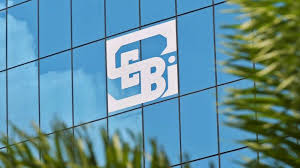
The Securities and Exchange Board of India (SEBI) has brought into effect the SEBI (Share Based Employee Benefits and Sweat Equity) Regulations, 2021. The regulations have widened the scope of employees who can be offered stock (equity) options.
- SEBI has merged the SEBI (Share Based Employee Benefits) Regulations, 2014 (SBEB Regulations) and the SEBI (Issue of Sweat Equity) Regulations, 2002 (Sweat Equity Regulations).
- SEBI is a statutory body established in accordance with the provisions of the SEBI Act, 1992. Its basic function is to protect the interests of investors in securities and to regulate the securities market.
Sweat Equity:
- Sweat equity is a non-monetary contribution that the individuals or founders of a company make towards the company. Cash-strapped startups and business owners typically use sweat equity to fund their companies.
- As per Section 2(88) of the Companies Act, 2013 sweat equity shares means such equity shares as are issued by a company to its directors or employees at a discount or for consideration, other than cash.
- Issued for: It will be issued for providing the know-how or making available rights in the nature of intellectual property rights or value additions.
- Maximum Limit:The maximum yearly limit of sweat equity shares that can be issued by a listed company has been prescribed at 15% of the existing paid-up equity share capital within the overall limit, not exceeding 25% of the paid-up capital at any time.
- Further, in case of companies listed on the Innovators Growth Platform (IGP), the yearly limit will be 15% and overall limit will be 50% of the paid-up capital at any time. It will be applicable for 10 years from the date of the company’s incorporation.
- SEBI in 2019 launched IGP erstwhile known as ‘Institutional Trading Platform’ for listing of issuers which are in intensive use of technology, information technology, intellectual property, data analytics, biotechnology or nano-technology to provide products, services or business platforms with substantial value addition.
- This proposal will benefit all new start-up companies seeking listing on the IGP platform.




